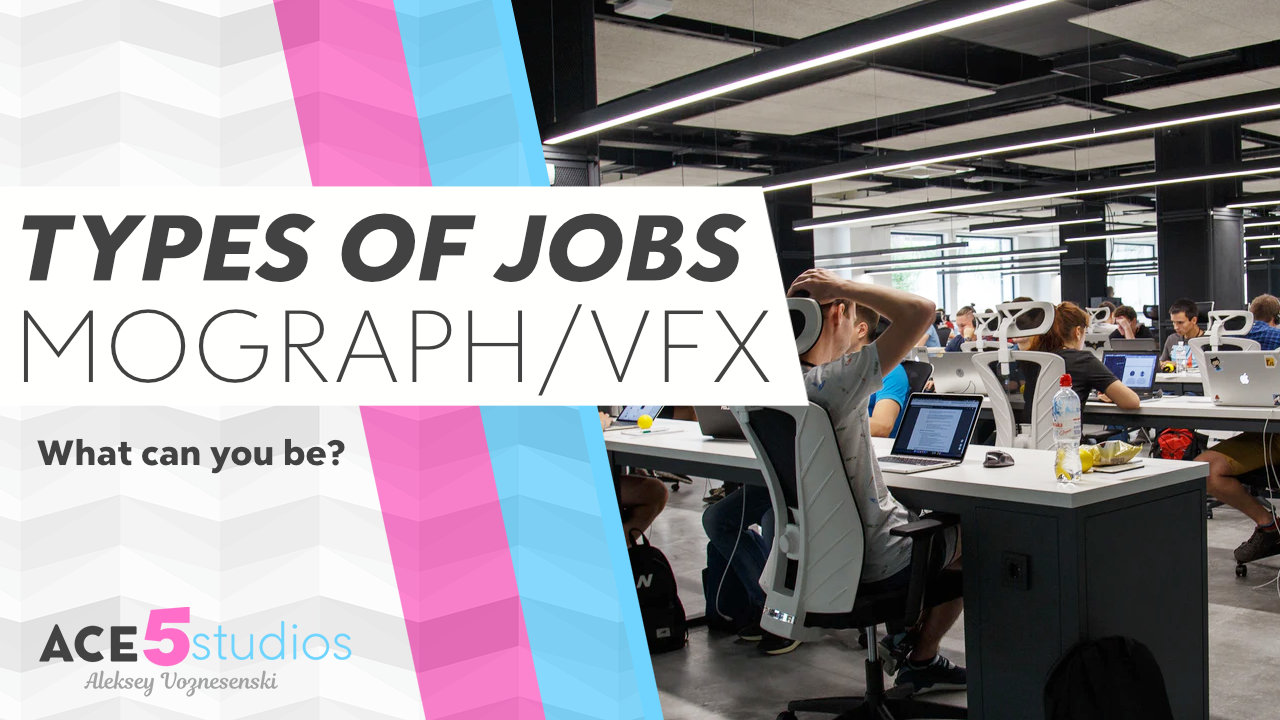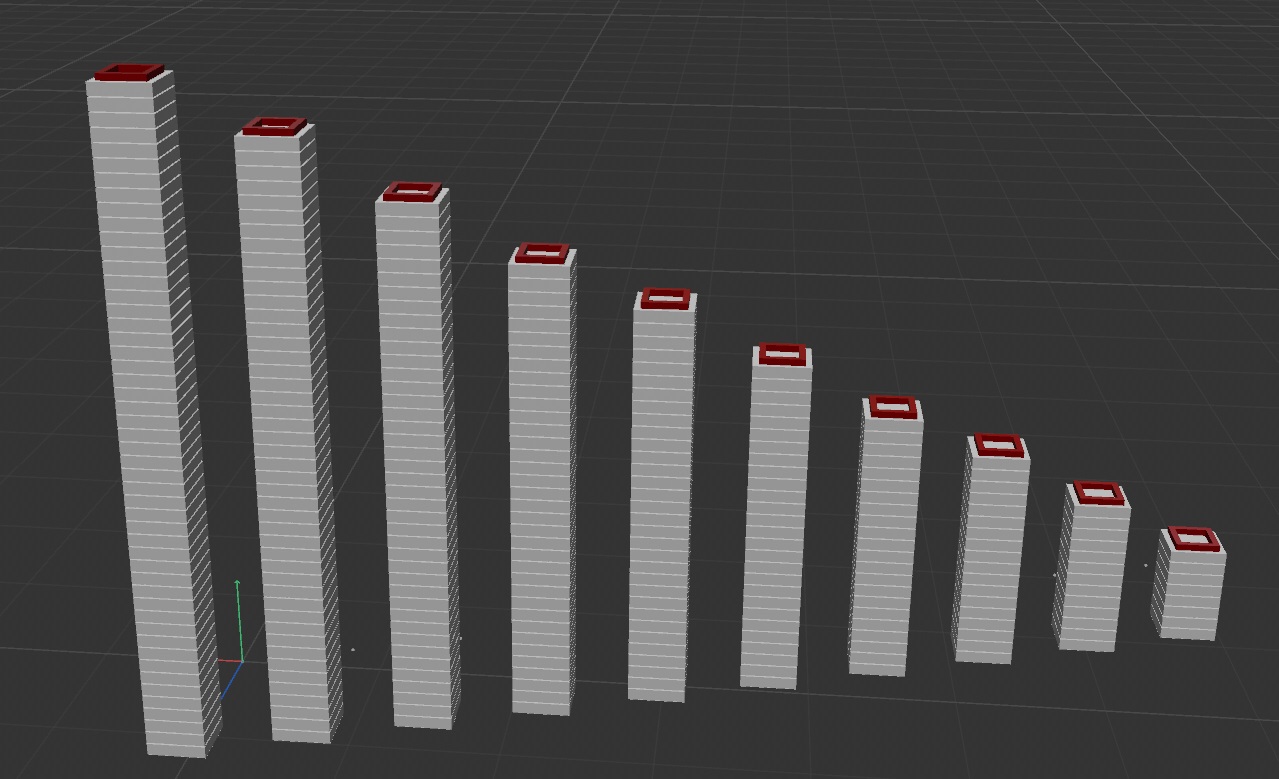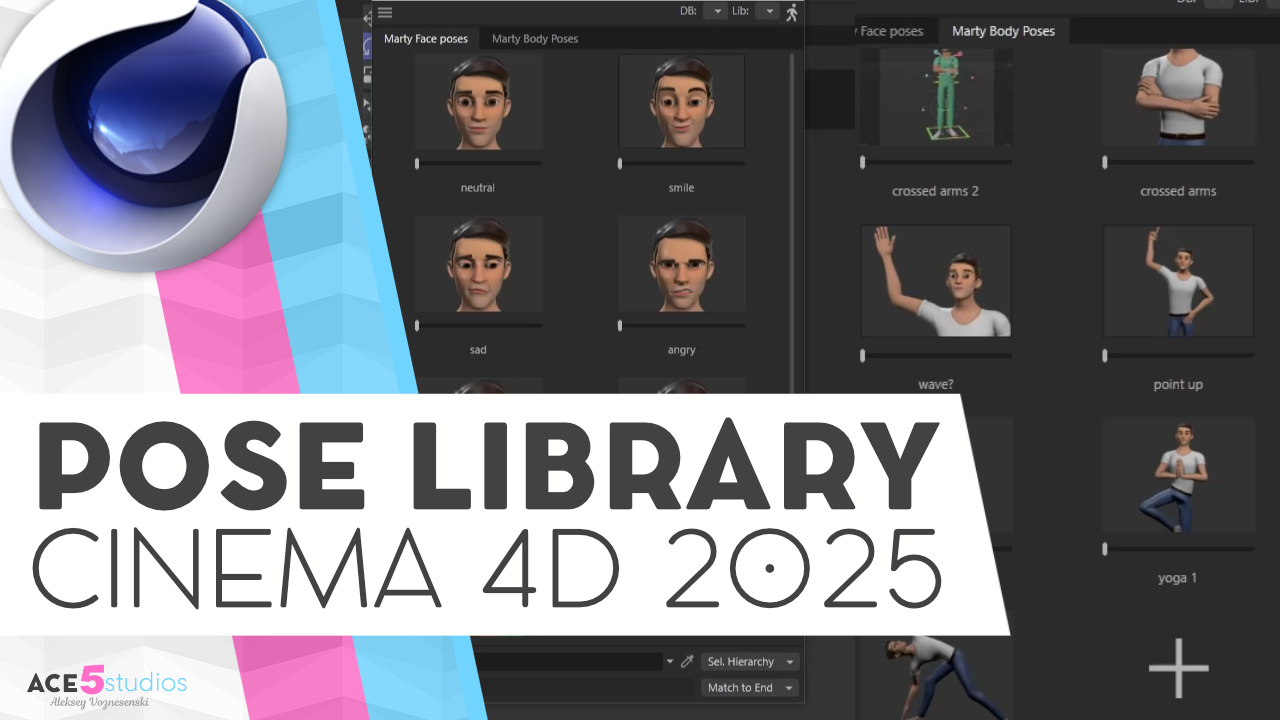You remember those books you had as a kid which listed all the possible professions, like fireman, police man, doctor etc.. ? I feel like in the 3D Mograph area that’s a bit of a lacking resource. So i decided to try stick together a bit of a guide of possible directions you can explore.
Before i go through them, i’d like to point out a key difference between MoGraph and general VFX and 3D for games and movies. When you work in Mograph, deadlines are a much larger issue, and they are MUCH shorter. So one of the main points here, is making something that looks cool with the least amount of time/computer power.
I’m also going to list the pro’s and con’s I see in each of these areas. But as everything in this industry, they always change, and depend on your geographic location, who you know and your personal level of luck.
Bumpers and 3D bumpers for tv channels.
I think this is where mograph in general originated, tv channels wanted cool stuff to show people. I’d have to guess MTV was the main driving force for this. These are kind of like title cards you see on TV ( if anyone reading this still watched this). The stuff that comes on before the weather, or a news update. The range here is huge, from super technical russian stuff, to quite basic stuff that is more favored in the west. This also has overlap with youtuber content now, since they need similar graphics for their channels etc.
main con: youtubers generally pay little, getting gigs with dwindling tv channel budgets is harder than ever. Also places like videohive provide just a mass of pre-built ones, which can be real pretty and you have to compete with that. Large brands pay very little, because everyone wants to work for them.
Some great work from top tier talents over here, Phillip Pavlovs is more skewed towards Russia and Eastern Europe, and then you can see the start difference towards more western work of Capacity
Vizualization
I’m going to group architectural and product into one here. This is basically creating very realistic or hyper realistic representations of real products for video ads, or maybe print ads.
Things to look up and google: Unreal architectural vizualization. RTX graphics cards and real time reflections in game engines. if you are doing product viz, you will most likely want some kinda of fluid simulation tool under your belt too. It will let you making swirly liquid stuff around juice boxes etc..
Animator
Basically here your job would be to make stuff move in an realistic and appealing manner. This could be characters, cars, particles, crowds ( although crowds is a bit more of a simulation thing). Would recommend to read up on the 12 principles of animation, and then start applying that to everything you can. Start with small basic stuff, like cubes, post boxes, fridges etc.. then move onto stuff with more moving parts.
This can also be applied to just text and camera moves. And just abstract shapes.
Character work
This is also a very vast field, which has many sections in it. Modelling/sculpting/retopology, texturing, Grooming ( hair fur), clothes creating/simulation, rigging ( putting bones and stuff in), animating ( blocking, cleaning up, adding detail) Danny Mac Has a great video about the process and what it involves
Abstract stuff for animation
Think all those crazy nike adds with knitting and other fancy stuff happening. This is basically a matter of learning the tools and what they can do and then figuring out how to combine them in new and interesting ways. Parts of it are very technical, but also lots of lucky accidents while messing with the various tools provided.
Previz
Short for pre-vizualization. Basically it’s blocking in all the movements, for characters, products, cameras etc and figuring out the timing, the mood, sticking some music onto it. This is something that really should be done for all projects, and often done by artists doing other stuff or art directors, but there are people who just do this as a profession.
Simulation Expert
Simulating fluids and explosions is something that is getting easier with every year, but it’s still not something that is easy to pick up, and the simulations takes LOTS of time, so lots of waiting for you computer to calculate stuff. In this field technical proficiency with managing networks can come in handy, so you can figure out how to get your software to calculate stuff across multiple computers, potentially in the cloud and get revisions faster.
Software to look into: Xparticles for cinema 4D, houdini
Medical Vizualization
Animating various medical stuff with molecules and viruses, you will be looking to provide visual materials for various medical research companies who need to demonstrate how their products work. Also documentaries which explain how the human body works. If you have an interest in biology, this is a good field to look at, since to do this well you have to be able to understand what is being explained to you and then visualize it. The more you already know about biology, the less the client has to teach you, and the faster you create what is needed.
Software: Cinema 4D mograph tools set, hair tools, xparticles, houdini, sculpting skills might also help.
Mad Microbe do some amazing work in this field!
Environment artist
This is basically all about making backgrounds, which spans from making rooms, like in archviz, all the way to making epic landscapes for lord of the rings style stuff.
For this kind of work you probably need houdinin, but lot’s can be done in Cinema4D. This is a small video that i really like about this sphere of work.
3D modelling Hard Surface and Organic
Hard surface – this is i guess part of the vizualization industry, but again, this is also a separate skill and specialization. Here you would specialize in modelling man made objects. Think Blenders, vacuum cleaners, cars, planes and electric toothbrushes. In this kind of job you would be provided with sketches and drawing which then you would have to turn into 3D models. Vitaly Bulgarov does some amazing work in this field!
Organic – Basically the same thing, but here the speciality is more organic stuff, Plants, food, animals, human characters etc.. The main difference from Hard surface modelling is you have to know more about rigging and animation, because your models will most likely be handed off to riggers and animators and they have to be able to deform naturally, unlike hard surface, where each individual part moves on it’s own.
3D sculpting artist
This a type of procedure that can be used for generating both hard surfaces and and organic surfaces, and if you are a talented sculptor you don’t really need to worry about good topology. You would be hired mostly just for your knowledge of what things look like or your ability to design characters out of virtual clay. It is up to you if you want to delve into retopology and baking.
Software: Zbrush, 3dcoat, blender
Clothing Artist
With tools such as marvelous designer you can focus on clothing design. If you can retopologize it and then sell it even better. This is a good field to go into if you ever wanted to be a clothing designer in the real world. Lots of the skills are transferable and quite essential.
Retopology and Baking
This is the process of converting the very dense geometry generated by 3d sculpting into much more efficient and light geo in order for it to be usable in animation down the line. It’s not the most fun work, but some people really enjoy it. Also every day there are new tools coming out which can significantly increase the speed with which you can work. Most people in the Mograph industry shy away from modelling.
Software: 3dcoat, topogun, xnormal, substance painter, blender, modo.
Vehicle Artist
Design and model, rig, animate vehicles, ariplanes, skate boards. Lots of overlap here with industrial design and concept art. Being good at drawing plays a pretty large role here. when targeting the mograph field, you will probably be more likely to make a profit modelling stuff for yourself and then selling them as ready assets so other artists can use them in their animations. Currently in 2020, i feel drone like vehicles, med evac or delivery type stuff i think should be quite popular.
This Is a great youtube channel about concept art in general, he talks more about the design process, not so much 3D. I think it’s a must watch if you want to move in this direction.
Lighting Artist
As the name implies, you would be setting up lighting for various scenes. This is all about conveying mood and emotion through lighting. Think of this as the type of person who sets up lights in a photo studio, but you could be working on an interior, or vast landscapes. Good way to demonstrate skills in this field, is getting a scene and then lighting it in different ways, demonstrating your range. Dark and scary, mysterious and exciting, happy and inviting etc. A good field to combine with materials/texture artist.
Look into: hdri light studio pro
Texture/material/surface artist
Here you are responsible for creating materials for others to use. Sometimes this is painting textures on an ogre, or realistic faces, other times its texturing an old rusty fridge, or a cargo ship full of fridges. The 2 main tools you should look into are Substance designer. This is a procedural node based material generator. So basically it is used to create materials which look at the geometry its being applied to and then vary based on that. So a smooth part of a model can be automatically painted different to an area full of corners and sharp point. And dirt can be automatically generated in creases. The second tool is substance painter, this is used to paint on stuff in a more direct way, like with paint brushes, but substances made in the other applications can be used as bases, and then customized for your specific model.
And some character texturing
UI/FUI
stuff like iron man, but can also be used by software developers who wants some cool looking stuff in their applications. But mostly probably would be targeted towards films, and futuristic video ads. You would be creating fancy stuff with mograph and cloning etc…
Projection Mapping
This can encompass pretty much all the stuff listed above, but you specialize in figuring out and creating ways to project the animations you make onto real life objects, like buildings, cars, tunnels, etc.. To practice this stuff ideally you would need a projector at home, so you can practice small scale. But you should also figure out how to project stuff virtually and then see if the virtual projection lines up with the physical one. The style of animation here is often very different to the stuff you do for advertising, since it needs to be slower and more long form.
Rigging
Setting up virtual object to be easier to animate. Here is a great video about what is rigging, i might have to make something of my own though at some point.
Overlap
As you can see lots of these fields overlap, and thats how it is everywhere. You can generalize or specialize as you see fit. What you pick is a combination of a) you should pick something that you enjoy doing, b) you should specialize enough for people to be able to remember that about you. for example :” oh yeah, i know someone who animates fridges!”
Story Telling
I know this is technically not 3D, but don’t discount the importance of this. I myself struggle with remember that i need to practice this, but this ads soo much to whatever you do. Humans love stories. Add stories to everything, even if they are bad and boring stories, a bad story is better than no story.
Getting jobs
Go read my article on them here: http://ace5studios.com/jobs, but apart from that you have 2 main choices to consider. You can either go directly after end clients and offer them a full service. So for example if you do projection mapping, you can go after city councils or hotels or event companies which need this kind of stuff and provide the whole package ( keep in mind that you will need to also provide sound in many case). Or you can target studios and other artists who need help with projects. This depends on your personality more than anything. Do you just want to do the thing you specialize in? Or do you want to also manage people, and have more over all direction in your hands. You can obviously do both, but this decision affects how you market your skills. Do you focus on other people in your industry, or do you throw your net out to just the general public?
This is by no means a comprehensive list, but i’ll add to it as i go. Got any suggestions? list em below in the comments 🙂




